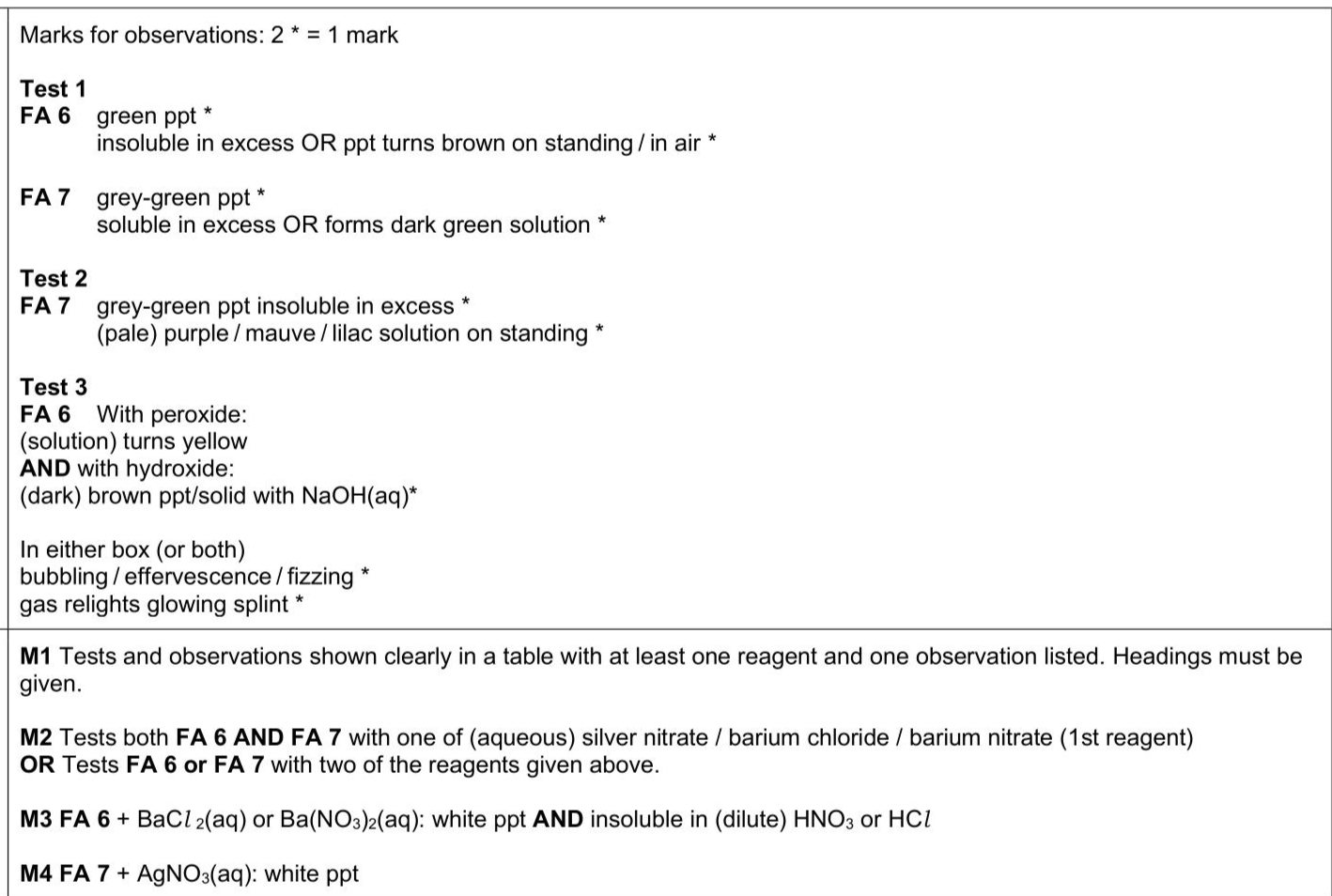Half-fill the $$\(250 \mathrm{~cm}^{3}\)$$ beaker with water and place it on a tripod and gauze. Heat the water until boiling then switch off your Bunsen burner. This is your hot water bath for use in (b). FA 6 and FA 7 are aqueous solutions that each contain one cation and one anion. All the ions are listed in the Qualitative analysis notes. None of the ions contains nitrogen. (i) Carry out the following tests using a 1 cm depth of FA 6 or FA 7 in a test-tube for each test. Record your observations in Table 3.1. (ii) Carry out tests to identify the anions in FA 6 and FA 7. Record your tests and observations in a suitable form in the space below. (iii) Use your observations from (a)(i) and (a)(ii) to deduce the formulae of FA 6 and FA 7. FA 6 is . FA 7 is . Ensure your water bath is hot and the Bunsen burner is turned off before you start (b).
Exam No:9701_s25_qp_35 Year:2025 Question No:3(a)
Answer:


Knowledge points:
11.3.1 describe the relative reactivity of halide ions as reducing agents
11.3.2.1 aqueous silver ions followed by aqueous ammonia (the formation and formula of the $\left[\mathrm{Ag}\left(\mathrm{NH}_{3}\right)_{2}\right]^{+}$ complex is not required)
11.3.2.2 concentrated sulfuric acid, to include balanced chemical equations
12.1.1 explain the lack of reactivity of nitrogen, with reference to triple bond strength and lack of polarity
12.1.2.1 the basicity of ammonia, using the Brønsted–Lowry theory
12.1.2.2 the structure of the ammonium ion and its formation by an acid–base reaction
12.1.2.3 the displacement of ammonia from ammonium salts by an acid–base reaction
12.1.3 state and explain the natural and man-made occurrences of oxides of nitrogen and their catalytic removal from the exhaust gases of internal combustion engines
12.1.4 understand that atmospheric oxides of nitrogen (NO) can react with unburned hydrocarbons to form peroxyacetyl nitrate, PAN, which is a component of photochemical smog
12.1.5 describe the role of NO in the formation of acid rain both directly and in their catalytic role in the oxidation of atmospheric sulfur dioxide
Solution:
Download APP for more features
1. Tons of answers.
2. Smarter Al tools enhance your learning journey.
IOS
Download
Download
Android
Download
Download
Google Play
Download
Download
